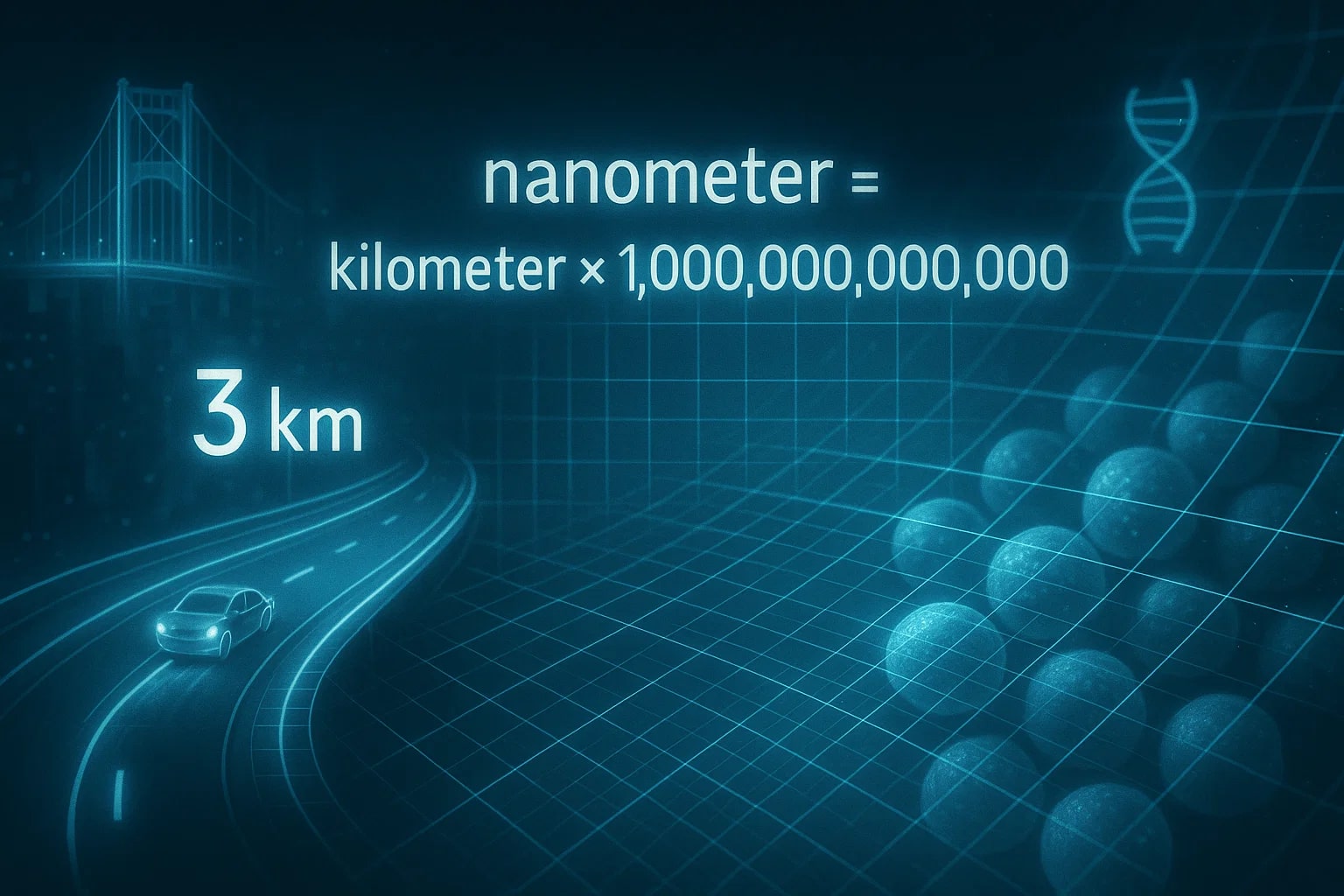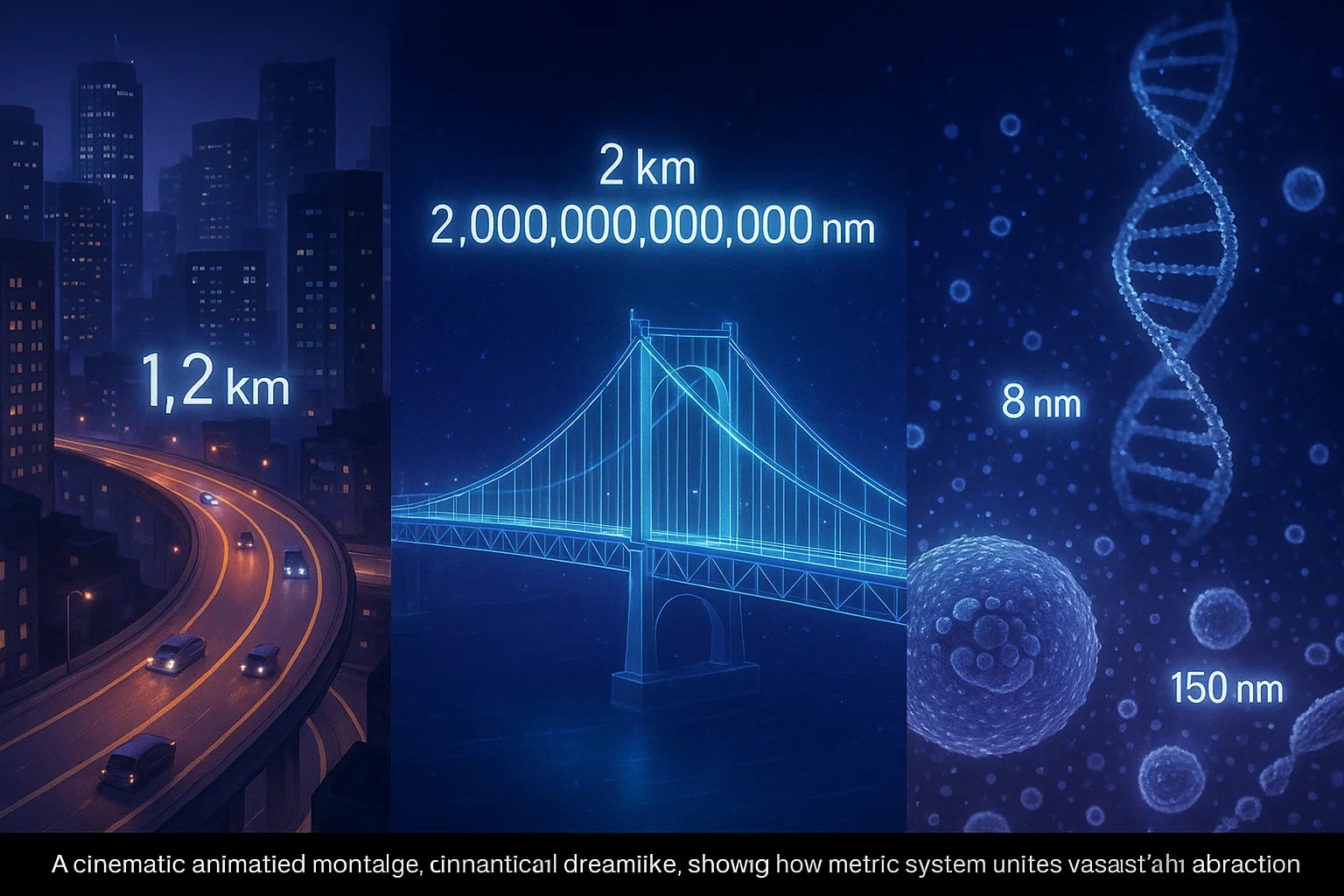kilometer to nanometer – How to convert km to nm
Converting from kilometer to nanometer demonstrates the incredible range of the metric system, from global distances down to the scale of atoms. The kilometer is used for road signs, geography, and mapping, while the nanometer is crucial in physics, biology, and semiconductor technology. Learning how to convert km to nm shows how a single system covers both the vast and the microscopic.

What is a Kilometer (km)?
A kilometer equals one thousand meters:
1 km = 1000 m.
It is widely used for travel distances, athletics, and maps, making it one of the most familiar metric units.
What is a Nanometer (nm)?
A nanometer is one billionth of a meter:
1 nm = 10⁻⁹ m.
It is used in nanoscience, optics, and molecular biology. For example, DNA strands are about 2 nm wide, and visible light wavelengths range from 400 to 700 nm.
How to Convert km to nm
The formula is:
nanometer = kilometer × 1 000 000 000 000
For example, let’s convert 0.002 km into nanometers:
nanometer = 0.002 × 1 000 000 000 000 = 2 000 000 000 nm
So, 0.002 km = 2 000 000 000 nm.
For additional conversions, you can use the Length Converter or explore the complete Conversion Tools.
Do you know?
-
The prefix nano- comes from Greek, meaning “dwarf,” and represents 10⁻⁹ in the metric system.
-
A kilometer contains exactly 1 trillion nanometers, highlighting the seamless scaling of metric units.
-
Semiconductor chips are often described by nanometer-scale transistor sizes, such as 7 nm or 5 nm technology.
-
Nanometers are central in optics, since wavelengths of visible light range between 400 and 700 nm.
From Roads to Atoms
Kilometers describe the distance you drive across a city, while nanometers describe the structures inside your cells. Though these scales feel worlds apart, the metric system connects them with simple powers of ten.
For example, if a bridge is 2 km long, expressing it in nanometers (2 trillion nm) shows just how large the gap is between human-scale and atomic-scale measurements. This versatility makes the metric system invaluable in both everyday life and advanced science.

A System That Scales Everything
The conversion from kilometer to nanometer shows why the metric system is universally trusted: it scales smoothly from the vast distances of geography to the invisible structures of nanotechnology.
By applying one formula, you can connect the largest and smallest worlds measured by humans.

